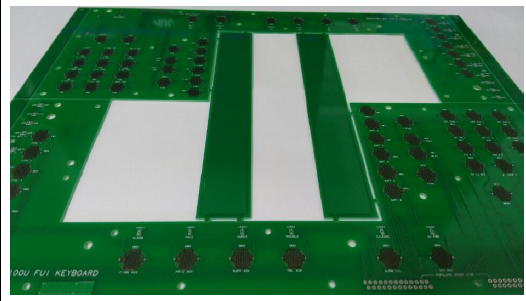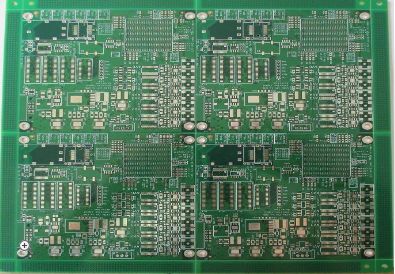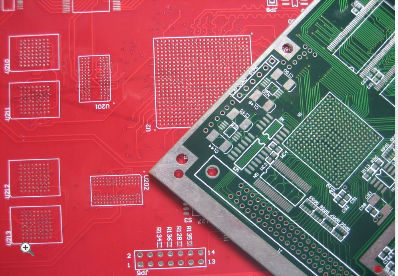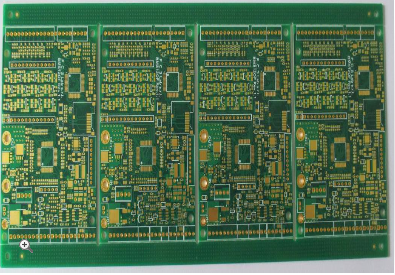-
 Agriculture
Agriculture
-
 Health-Care
Health-Care
-
 Environment
Environment
-
 Construction-Real-Estate
Construction-Real-Estate
-
 Tools-Hardware
Tools-Hardware
-
 Home-Garden
Home-Garden
-
 Furniture
Furniture
-
 Luggage-Bags-Cases
Luggage-Bags-Cases
-
 Medical-devices-Supplies
Medical-devices-Supplies
-
 Gifts-Crafts
Gifts-Crafts
-
 Sports-Entertainment
Sports-Entertainment
-
 Food-Beverage
Food-Beverage
-
 Vehicles-Transportation
Vehicles-Transportation
-
 Power-Transmission
Power-Transmission
-
 Material-Handling
Material-Handling
-
 Renewable-Energy
Renewable-Energy
-
 Safety
Safety
-
 Testing-Instrument-Equipment
Testing-Instrument-Equipment
-
 Construction-Building-Machinery
Construction-Building-Machinery
-
 Pet-Supplies
Pet-Supplies
-
 Personal-Care-Household-Cleaning
Personal-Care-Household-Cleaning
-
 Vehicle-Accessories-Electronics-Tools
Vehicle-Accessories-Electronics-Tools
-
 School-Office-Supplies
School-Office-Supplies
-
 Packaging-Printing
Packaging-Printing
-
 Mother-Kids-Toys
Mother-Kids-Toys
-
 Business-Services
Business-Services
-
 Commercial-Equipment-Machinery
Commercial-Equipment-Machinery
-
 Apparel-Accessories
Apparel-Accessories
-
 Security
Security
-
 Shoes-Accessories
Shoes-Accessories
-
 Vehicle-Parts-Accessories
Vehicle-Parts-Accessories
-
 Jewelry-Eyewear-Watches-Accessories
Jewelry-Eyewear-Watches-Accessories
-
 Lights-Lighting
Lights-Lighting
-
 Fabric-Textile-Raw-Material
Fabric-Textile-Raw-Material
-
 Fabrication-Services
Fabrication-Services
-
 Industrial-Machinery
Industrial-Machinery
-
 Consumer-Electronics
Consumer-Electronics
-
 Electrical-Equipment-Supplies
Electrical-Equipment-Supplies
-
 Electronic-Components-Accessories-Telecommunications
Electronic-Components-Accessories-Telecommunications
-
 Home-Appliances
Home-Appliances
-
 Beauty
Beauty
-
 Chemicals
Chemicals
-
 Rubber-Plastics
Rubber-Plastics
-
 Metals-Alloys
Metals-Alloys
- Masonry Materials
- Curtain Walls & Accessories
- Earthwork Products
- Fireproofing Materials
- Heat Insulation Materials
- Plastic Building Materials
- Building Boards
- Soundproofing Materials
- Timber
- Waterproofing Materials
- Balustrades & Handrails
- Bathroom & Kitchen
- Flooring & Accessories
- Tiles & Accessories
- Door, Window & Accessories
- Fireplaces & Stoves
- Floor Heating Systems & Parts
- Stairs & Stair Parts
- Ceilings
- Elevators & Escalators
- Stone
- Countertops, Vanity Tops & Table Tops
- Mosaics
- Metal Building Materials
- Multifunctional Materials
- Ladders & Scaffoldings
- Mouldings
- Corner Guards
- Decorative Films
- Formwork
- Building & Industrial Glass
- Other Construction & Real Estate
- Wallpapers/Wall panels
- HVAC System & Parts
- Outdoor Facilities
- Prefabricated Buildings
- Festive & Party Supplies
- Bathroom Products
- Household Sundries
- Rain Gear
- Garden Supplies
- Household Cleaning Tools & Accessories
- Lighters & Smoking Accessories
- Home Storage & Organization
- Household Scales
- Smart Home Improvement
- Home Textiles
- Kitchenware
- Drinkware & Accessories
- Dinnerware, Coffee & Wine
- Home Decor
- Golf
- Fitness & Body Building
- Amusement Park Facilities
- Billiards, Board Game,Coin Operated Games
- Musical Instruments
- Outdoor Affordable Luxury Sports
- Camping & Hiking
- Fishing
- Sports Safety&Rehabilitation
- Ball Sports Equipments
- Water Sports
- Winter Sports
- Luxury Travel Equipments
- Sports Shoes, Bags & Accessories
- Cycling
- Other Sports & Entertainment Products
- Artificial Grass&Sports Flooring&Sports Court Equipment
- Scooters
- Food Ingredients
- Honey & Honey Products
- Snacks
- Nuts & Kernels
- Seafood
- Plant & Animal Oil
- Beverages
- Fruit & Vegetable Products
- Frog & Escargot
- Bean Products
- Egg Products
- Dairy Products
- Seasonings & Condiments
- Canned Food
- Instant Food
- Baked Goods
- Other Food & Beverage
- Meat & Poultry
- Confectionery
- Grain Products
- Feminie Care
- Hair Care & Styling
- Body Care
- Hands & Feet Care
- Hygiene Products
- Men's Grooming
- Laundry Cleaning Supplies
- Travel Size & Gift Sets
- Room Deodorizers
- Other Personal Care Products
- Pest Control Products
- Special Household Cleaning
- Floor Cleaning
- Kitchen & Bathroom Cleaning
- Oral Care
- Bath Supplies
- Yellow Pages
- Correction Supplies
- Office Binding Supplies
- Office Cutting Supplies
- Board Erasers
- Office Adhesives & Tapes
- Education Supplies
- Pencil Cases & Bags
- Notebooks & Writing Pads
- File Folder Accessories
- Calendars
- Writing Accessories
- Commercial Office Supplies
- Pencil Sharpeners
- Pens
- Letter Pad/Paper
- Paper Envelopes
- Desk Organizers
- Pencils
- Markers & Highlighters
- Filing Products
- Art Supplies
- Easels
- Badge Holder & Accessories
- Office Paper
- Printer Supplies
- Book Covers
- Other Office & School Supplies
- Stationery Set
- Boards
- Clipboards
- Stamps
- Drafting Supplies
- Stencils
- Electronic Dictionary
- Books
- Map
- Magazines
- Calculators
- Baby & Toddler Toys
- Educational Toys
- Classic Toys
- Dress Up & Pretend Play
- Toy Vehicle
- Stuffed Animals & Plush Toys
- Outdoor Toys & Structures
- Balloons & Accessories
- Baby Food
- Children's Clothing
- Baby Supplies & Products
- Maternity Clothes
- Kids Shoes
- Baby Care
- Novelty & Gag Toys
- Dolls & Accessories
- Puzzle & Games
- Blocks & Model Building Toys
- Toddler Clothing
- Baby Clothing
- Kids' Luggage & Bags
- Arts, Crafts & DIY Toys
- Action & Toy Figures
- Baby Appliances
- Hobbies & Models
- Remote Control Toys
- Promotional Toys
- Pregnancy & Maternity
- Hygiene Products
- Kid's Textile&Bedding
- Novelty & Special Use
- Toy Weapons
- Baby Gifts
- Baby Storage & Organization
- Auto Drive Systems
- ATV/UTV Parts & Accessories
- Marine Parts & Accessories
- Other Auto Parts
- Trailer Parts & Accessories
- Auto Transmission Systems
- Train Parts & Accessories
- Universal Parts
- Railway Parts & Accessories
- Auto Brake Systems
- Aviation Parts & Accessories
- Truck Parts & Accessories
- Auto Suspension Systems
- Auto Lighting Systems
- New Energy Vehicle Parts & Accessories
- Auto Steering Systems
- Wheels, Tires & Accessories
- Bus Parts & Accessories
- Auto Performance Parts
- Cooling System
- Go-Kart & Kart Racer Parts & Accessories
- Air Conditioning Systems
- Heavy Duty Vehicle Parts & Accessories
- Auto Electrical Systems
- Auto Body Systems
- Auto Engine Systems
- Container Parts & Accessories
- Motorcycle Parts & Accessories
- Refrigeration & Heat Exchange Equipment
- Machine Tool Equipment
- Food & Beverage Machinery
- Agricultural Machinery & Equipment
- Apparel & Textile Machinery
- Chemical Machinery
- Packaging Machines
- Paper Production Machinery
- Plastic & Rubber Processing Machinery
- Industrial Robots
- Electronic Products Machinery
- Metal & Metallurgy Machinery
- Woodworking Machinery
- Home Product Manufacturing Machinery
- Machinery Accessories
- Environmental Machinery
- Machinery Service
- Electrical Equipment Manufacturing Machinery
- Industrial Compressors & Parts
- Tobacco & Cigarette Machinery
- Production Line
- Used Industrial Machinery
- Electronics Production Machinery
- Other Machinery & Industrial Equipment
- Camera, Photo & Accessories
- Portable Audio, Video & Accessories
- Television, Home Audio, Video & Accessories
- Video Games & Accessories
- Mobile Phone & Accessories
- Electronic Publications
- Earphone & Headphone & Accessories
- Speakers & Accessories
- Smart Electronics
- TV Receivers & Accessories
- Mobile Phone & Computer Repair Parts
- Chargers, Batteries & Power Supplies
- Used Electronics
- VR, AR, MR Hardware & Software
- Projectors & Presentation Equipments
- Other Consumer Electronics
- Cables & Commonly Used Accessories
- Computer Hardware & Software
- Displays, Signage and Optoelectronics
- Discrete Semiconductors
- Wireless & IoT Module and Products
- Telecommunications
- Connectors, Terminals & Accessories
- Development Boards, Electronic Modules and Kits
- Circuit Protection
- Sensors
- Isolators
- Audio Components and Products
- Integrated Circuits
- Power Supplies
- Relays
- RF, Microwave and RFID
- Electronic Accessories & Supplies
- Passive Components
- PCB & PCBA
- Air Quality Appliances
- Home Appliance Parts
- Heating & Cooling Appliances
- Small Kitchen Appliances
- Laundry Appliances
- Water Heaters
- Water Treatment Appliances
- Refrigerators & Freezers
- Personal Care & Beauty Appliances
- Major Kitchen Appliances
- Cleaning Appliances
- Second-hand Appliances
- Smart Home Appliances
- Other Home Appliances
- Energy Chemicals
- Inorganic Chemicals
- Basic Organic Chemicals
- Agrochemicals
- Admixture & Additives
- Catalysts & Chemical Auxiliary Agents
- Pigments & Dyestuff
- Coating & Paint
- Daily Chemicals
- Polymer
- Organic Intermediate
- Adhesives & Sealants
- Chemical Waste
- Biological Chemical Products
- Surface Treatment Chemicals
- Painting & Coating
- Chemical Reagents
- Flavor & Fragrance
- Non-Explosive Demolition Agents
- Other Chemicals
- Custom Chemical Services
Material Selection Guide for Durable PCBs in Filter and Amplifier Circuits
In the realm of electronics, filter and amplifier circuits are fundamental components that shape signal integrity and performance in applications ranging from telecommunications to medical devices. However, the durability and reliability of these circuits heavily depend on the materials used in their printed circuit boards (PCBs). As technology advances, circuits face harsher environments, including high frequencies, thermal stress, and mechanical wear, making material selection a critical factor in ensuring long-term functionality. This guide serves as an essential resource for engineers and designers, offering insights into choosing PCB materials that enhance durability without compromising electrical performance. By exploring key material properties and their impact on circuit behavior, readers will gain practical knowledge to tackle real-world challenges in filter and amplifier design, ultimately leading to more robust and efficient electronic systems.
Substrate Materials and Their Electrical Properties
The substrate forms the foundation of any PCB, and its dielectric constant (Dk) and loss tangent (Df) are paramount for filter and amplifier circuits. Materials with a stable Dk across frequency ranges, such as FR-4 or specialized laminates like Rogers RO4000 series, help maintain consistent impedance, which is crucial for minimizing signal distortion in filters. For instance, in high-frequency amplifiers, a low Df reduces energy loss, preserving signal strength and improving efficiency. By selecting substrates with tailored electrical properties, designers can achieve better performance in applications like RF filters or audio amplifiers, where even minor variations can lead to significant degradation.
Beyond basic parameters, thermal stability of the substrate also influences electrical behavior. Materials like polyimide or ceramic-filled composites offer excellent thermal resistance, preventing shifts in Dk under temperature fluctuations common in amplifier operations. This ensures that filters maintain their cutoff frequencies and amplifiers deliver stable gain over time. Additionally, considering the operating frequency band—whether for microwave filters or low-frequency audio circuits—guides the choice between standard FR-4 for cost-effectiveness or advanced materials like PTFE for superior high-frequency performance, balancing durability with electrical needs.
Copper Foil Selection for Conductivity and Adhesion
Copper foil is the conductive layer in PCBs, and its type—such as electro-deposited (ED) or rolled-annealed (RA)—affects both electrical and mechanical durability. ED copper, with its rough surface, provides strong adhesion to substrates, reducing delamination risks in filter circuits exposed to vibration or thermal cycling. However, its higher skin effect at high frequencies can increase losses in amplifier paths. In contrast, RA copper offers smoother surfaces and better conductivity, making it ideal for high-frequency amplifiers where minimal resistance is key to maintaining signal integrity and power efficiency.
The thickness of the copper foil also plays a vital role; thicker foils handle higher current loads in power amplifiers, reducing heat buildup and prolonging PCB life. For precision filters, thinner foils allow for finer trace designs, enhancing accuracy in impedance matching. Moreover, surface treatments like immersion silver or ENIG (Electroless Nickel Immersion Gold) can improve solderability and corrosion resistance, ensuring reliable connections in humid or corrosive environments. By evaluating these factors, designers can optimize copper selection to withstand operational stresses while supporting the electrical demands of filters and amplifiers.
Thermal Management Materials
Effective thermal management is essential for durable PCBs in filter and amplifier circuits, as excessive heat can degrade components and alter circuit behavior. Materials with high thermal conductivity, such as metal-core PCBs (e.g., aluminum or copper bases), dissipate heat efficiently from power amplifiers, preventing thermal runaway and extending component lifespan. For example, in Class AB amplifiers, which generate significant heat, using insulated metal substrates helps maintain stable performance by keeping temperatures within safe limits, thereby reducing failure rates and ensuring consistent filtering action in adjacent circuits.
In addition to core materials, thermal interface materials like thermal vias or heat sinks integrated into the PCB design enhance heat distribution. For high-density filter arrays, where components are closely packed, these features minimize hot spots that could cause material expansion and signal drift. Selecting laminates with low coefficient of thermal expansion (CTE), such as ceramic-based boards, also mitigates mechanical stress from temperature cycles, preserving solder joints and trace integrity. By prioritizing thermal properties, engineers can build PCBs that endure harsh conditions, from industrial amplifiers to automotive filter systems, without compromising durability.
Environmental Resistance and Protective Coatings
Environmental factors like moisture, chemicals, and UV exposure can compromise PCB durability, particularly in outdoor or industrial filter and amplifier applications. Materials with low water absorption rates, such as polyimide or halogen-free laminates, resist swelling and electrical shorts, ensuring reliable operation in humid climates. For instance, in marine communication filters, these materials prevent degradation that could alter filter responses, while in amplifier circuits, they safeguard against corrosion that might impair signal amplification over time.
Protective coatings further enhance resilience; conformal coatings like acrylic or silicone provide a barrier against contaminants, reducing the risk of dendrite growth or oxidation on traces. In amplifier boards subjected to variable temperatures, such coatings also offer flexibility to withstand thermal expansion without cracking. Additionally, selecting materials with high glass transition temperatures (Tg) ensures that PCBs retain structural integrity under heat, which is critical for amplifiers in automotive or aerospace settings. By incorporating these environmental safeguards, designers can prolong PCB life and maintain circuit accuracy in demanding scenarios.
Mechanical Strength and Flexibility
The mechanical robustness of PCB materials directly impacts durability in filter and amplifier circuits, especially in applications involving shock or flexure. Rigid materials like FR-4 provide excellent structural support for heavy components in power amplifiers, reducing the risk of board fracture under mechanical stress. However, for compact or wearable devices incorporating filters, flexible substrates such as polyimide allow bending without compromising electrical paths, enabling designs that endure repeated movement without failure.
Beyond flexibility, material hardness and layer adhesion contribute to overall longevity. Multilayer PCBs used in complex filter networks benefit from strong bonding between layers, preventing delamination during assembly or operation. In high-vibration environments, like automotive amplifier systems, materials with high fatigue resistance ensure that solder joints and vias remain intact, maintaining signal continuity. By assessing mechanical properties alongside electrical needs, engineers can select materials that offer a balance of strength and adaptability, resulting in PCBs that perform reliably across diverse filter and amplifier applications.
REPORT































































































































































































































































































































































































































































































































































































